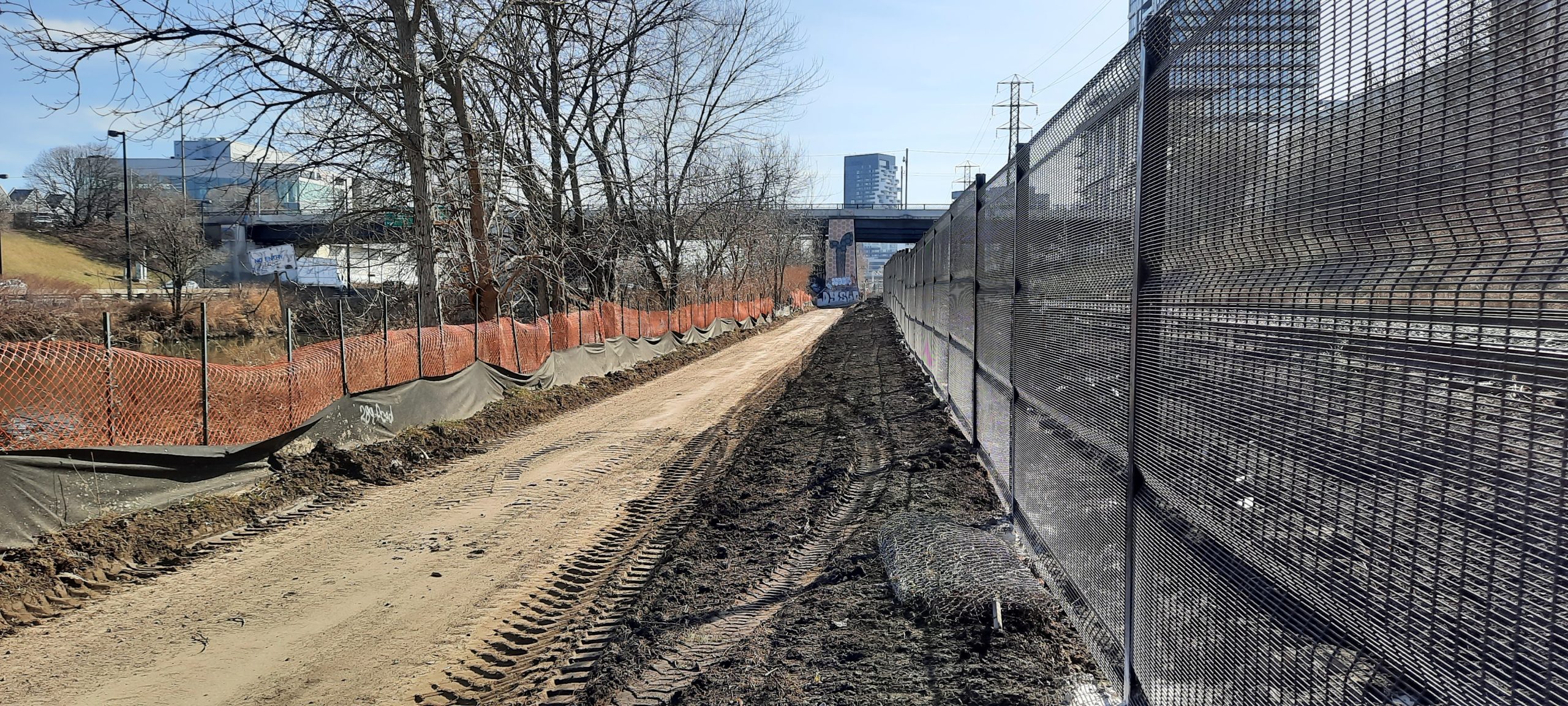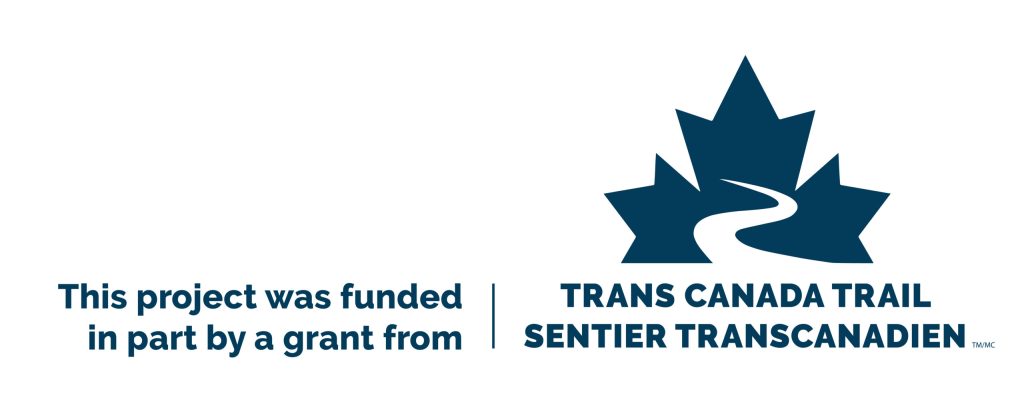
The Lower Don River Trail is undergoing improvements to upgrade accessibility, mitigate erosion and flooding from the Don River, resolve drainage issues and enhance overall trail connections. Guided by the 2013 Lower Don River Trail Master Plan, the trail improvements are complemented by a series of projects (several of which have already been completed) that will protect and enhance the Don Valley environment and its recreational amenities.
While we aim to provide fully accessible content, there is no text alternative available for some of the content on this site. If you require alternate formats or need assistance understanding our maps, drawings, or any other content, please contact Ruthanne Henry at 416-395-0142.
The timeline is subject to change.
The project continues to face significant challenges due to safety-related requirements from Metrolinx, challenges working within a narrow work area between the Don River and Metrolinx tracks and due to very poor soil conditions in the river valley. Staff and the contractor are working closely with Metrolinx and other stakeholders to complete the remaining work safely and open the trail for community use.
A sequenced reopening is planned as per the following:
The project not only involves trail construction but also complex structural ramp and stairs installation, and requires deep footing to bedrock to support the structures. Once complete, it will offer a lasting experience for the community that improves accessibility.
As mentioned in the May 2024 update, the project has faced significant challenges, including poor soil conditions, erosion, and the complex underground network of utilities like gas mains, internet and railway cables, Toronto Water chambers, water mains and sewers. As the project has been a utility corridor for more than a hundred years some of these utilities are not mapped and are found through the construction process. Each time these issues arise, the project team works closely with various groups to find solutions, which sometimes requires redesigning parts of the project. Additionally, external factors such as Hydro One’s emergency work on nearby towers, Metrolinx’s railway maintenance and July’s flooding have further impacted progress.
Despite these challenges, significant progress has been made on the following items since the trail closure:
For more information about the Old Eastern Bridge demolition, contact Waterfront Toronto at info@waterfrontoronto.ca. For information on the Enbridge Utility Bridge demolition, contact MunicipalAffairs@enbridge.com
The work is still anticipated to be completed by July 2025.
Work is progressing with revised foundation construction for the elevated sloped path. This foundation work will help stabilize the ground to address poor soil conditions discovered in late 2023. This additional work, and delays in obtaining the required structural steel, have impacted the sequencing for the fabrication and installation of the elevated ramp at Riverdale pedestrian bridge and the new staircase at Dundas Street bridge, delaying the project completion date.
While this work will continue through winter 2024/2025, other landscape and site restoration work will need to be completed in spring 2025 because it cannot be done during the winter. With construction ongoing until July 2025, the active construction site will stay closed for public safety.
The City continues to work closely with the contractor to identify opportunities to complete the work sooner and investigate where work can be phased to allow for earlier opening at sections of the trail, if feasible.

Construction is delayed and is anticipated to be completed in late summer 2024. The project site is complex, narrow and located between the Don River and a rail corridor, resulting in some challenges with getting materials and equipment in and out of the site. Additionally, a section of the site experienced erosion from the nearby river (a geotechnical review for a solution is underway) and some of the required permitting and approvals from other infrastructure located nearby took longer than anticipated.
Construction is active on the Lower Don River Trail. All trees permitted for removal have been removed, with some exceptions. Existing site features including asphalt pavement, Metrolinx fences at the railway side and pedestrian guardrails at the riverside have been removed in sections throughout the entire site. Construction vehicles travel throughout the site and will start excavating the foundations and preparing the site for slope path construction at the Riverdale bridge area and staircase construction at Dundas bridge. The trail should not be used by the public at all, as it is unsafe.
Trail entrances at Pottery Road, the Riverdale bridge staircase, Queen bridge staircase and Corktown are closed. Additional barriers are also located within the closed area at the Bellville Underpass, and the bridge over the Don River, north of the pedestrian bridge. The City monitors and reinforces the trail closures daily.
Construction has started with site preparation work, which is taking longer than anticipated due to the irregular topography of the site and approvals and inspection for the permit conditions. The trail closed in May so that the contractor could access and set up the staging area, tree protection and sediment control required for the permits.
Due to the few entry/exit locations along the trail, 4 km of the trail is closed to the public to allow for the contractors to start work in an area that encompasses both south and north of the mid-access point (Riverdale Parks East and West into the trail and vice versa). While it is possible to briefly open the very small area at the south end of the trail, from Queen Street to Corktown, the closure would be hidden from the entrance and confusing as pedestrians and cyclists would need to turn around and detour. Additionally, construction will move to this area soon. In mid-June, other construction activities like excavation will start and create unsafe conditions, even during the weekends when construction work has paused.
The Bayview Avenue Multi-Use Trail is available as an alternative route for the entire distance of the closure and is parallel to the trail.
From May 2, 2023, to summer 2024, the Lower Don River Trail will be closed from Pottery Road to Bala Underpass at Corktown Common, including the Riverdale pedestrian bridge and Queen Street bridge stairs, for construction. Signs with a detour map are posted at all trail access points. The Bayview Multi-Use Trail, west of the Metrolinx Railway, is available as an alternative route.
The pedestrian bridge connecting Riverdale Park West and Riverdale Park East is open to the public but will not provide access to the Lower Don Trail during construction.
Areas near the Lower Don River Trail are undergoing improvements as part of the 2013 Master Plan implementation.
The project will improve the marsh’s water retention and habitat quality with new plantings and invasive species management. A new lookout will be added with interpretive elements and Indigenous placekeeping. The project is funded in part by the Federal Natural Infrastructure Fund (NIF).
The project will add a kiosk and signage to the trail entrance from Crothers Woods.
The Cudmore Creek Wetland and Trailhead Improvements project will revitalize the new trailhead with signage to improve overall safety and visitor experience and restore the wetland habitat. The project is funded in part by the Federal Investing in Canada Infrastructure Program (ICIP) and the Hydro One Biodiversity Initiative.
The Riverdale Park East Top of Bank Improvements project will establish a lookout point with seating at the top of the hill.
The project will improve accessibility to Wellesley Park.
The 2013 Lower Don River Trail Master Plan was developed in consultation with project partners and key stakeholders, including the Toronto Region Conservation Authority (TRCA), Metrolinx, the Toronto Accessibility Advisory Committee and the City’s maintenance and operations team. The 2013 Master Plan aims to generate a strong identity for the entire trial while also improving it by adding trail connections and safety features, upgrading accessibility, better managing natural environments and developing a strategy for public art installations.
Since the 2013 Master Plan, improvements were completed at:
